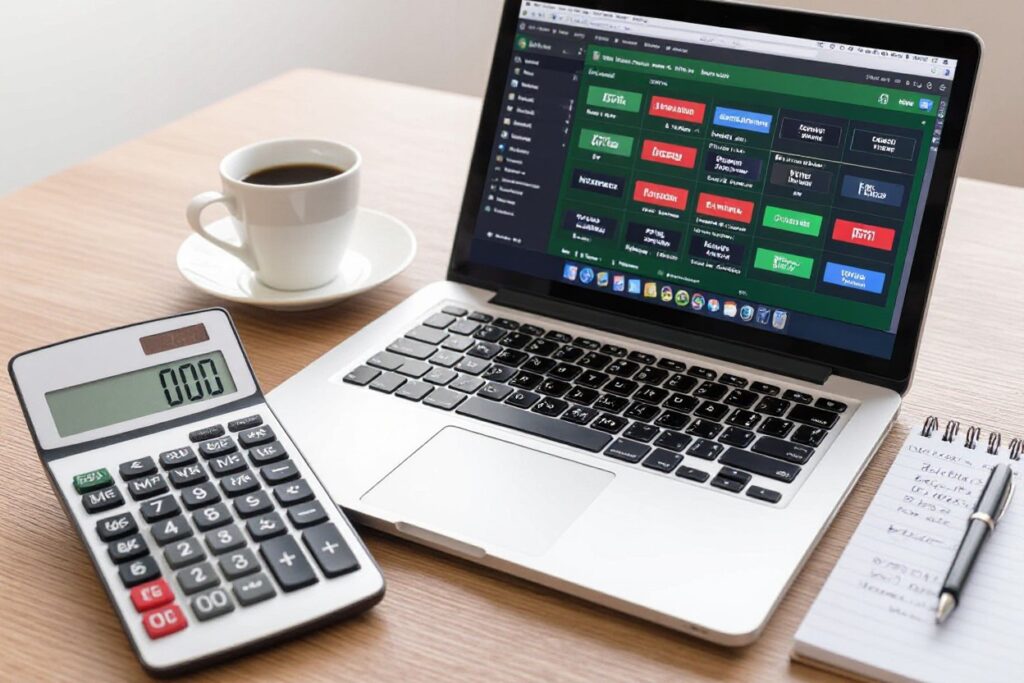
Most successful tennis bettors know that profitable wagering requires more than just picking your favorite player. When you look into tennis betting, you’ll discover a complex world where statistics and strategic analysis play a vital role in making informed decisions. Your ability to interpret player performance metrics, head-to-head records, and surface-specific data can significantly improve your chances of success. However, be aware that even the most detailed analysis doesn’t guarantee wins, as tennis matches can be unpredictable with factors like injuries, weather conditions, and player form affecting outcomes.
The Statistical Backbone of Tennis Betting
Key Performance Metrics: What to Watch
Statistical analysis forms the foundation of successful tennis betting strategies. Your focus should be on service game percentages, break point conversion rates, and head-to-head records. These metrics reveal patterns in player performance and potential match outcomes. Recognizing these key indicators helps you make data-driven betting decisions rather than relying on intuition alone.
| Metric | Significance |
|---|---|
| First Serve % | Indicates service game dominance |
| Break Points Saved | Shows mental strength under pressure |
| Return Games Won | Reflects offensive capabilities |
| Winners/Unforced Errors | Measures consistency level |
| Recent Form | Current performance trajectory |
- Service efficiency – First serve percentage and aces
- Return game success – Break points converted
- Physical condition – Recent match history
The Role of Surface Types in Match Outcomes
Surface preferences significantly impact player performance and betting odds. Clay courts favor baseline players with strong defensive skills, while grass courts benefit big servers and aggressive players. Hard courts present a middle ground, requiring adaptability. Recognizing how different players perform across surfaces provides valuable insights for your betting strategy.
| Surface Type | Key Characteristics |
|---|---|
| Clay | Slower bounces, longer rallies |
| Grass | Fast, low bounces |
| Hard Court | Medium-paced, consistent bounce |
| Indoor Hard | Controlled conditions |
| Carpet | Fast, low bounce variation |
- Court speed – Impact on playing style
- Bounce height – Advantage for specific techniques
- Weather conditions – Effect on ball movement
Decoding Player Form and Head-to-Head Dynamics
Recent Performance Trends: Form vs. Fatigue
Players’ recent match history reveals more than just wins and losses. Track their last 5-10 matches while noting physical intensity levels and recovery time between matches. A player coming off multiple three-set battles might struggle against a well-rested opponent, even with superior ranking. Your analysis should include tournament scheduling, travel demands, and surface transitions – factors that directly impact performance and betting value.
Historical Rivalries: Diving into Head-to-Head Records
Head-to-head records offer unique betting insights beyond basic win-loss ratios. Playing styles, court preferences, and psychological edges often create patterns that persist across multiple matchups. Your focus should extend to specific surface results, set scores, and match duration in previous encounters.
The nuances of player matchups can override current form and rankings. Take Rafael Nadal vs. Dominic Thiem – while Thiem holds fewer overall victories, he’s proven particularly competitive on hard courts. Surface-specific head-to-head records often reveal profitable betting opportunities that general statistics miss. Consider factors like left-handed vs. right-handed dynamics, baseline vs. serve-and-volley styles, and performance under pressure in deciding sets.
The Clutch Factor: Analyzing Pressure Performance
Players’ ability to perform under pressure often determines match outcomes and betting value. Statistical analysis of high-stakes moments reveals patterns that casual observation might miss, helping you identify athletes who consistently deliver when it matters most.
Examining Break Points and Tiebreaks
Break point conversion rates and tiebreak records provide clear indicators of a player’s clutch performance. Top performers like Novak Djokovic maintain break point conversion rates above 45%, while their break point save percentage exceeds 65%. Tracking these metrics across different surfaces and tournament levels helps you spot betting opportunities where odds don’t reflect a player’s true pressure-handling capabilities.
Mental Resilience: How Players Handle Crucial Moments
Mental toughness manifests in specific, measurable ways during matches. Players with high mental resilience typically show better performance in deciding sets, maintain consistent first-serve percentages during tight moments, and demonstrate quicker recovery after losing important points.
Looking deeper into mental resilience stats reveals fascinating patterns. Rafael Nadal’s career fifth-set record of 22-12 and his remarkable 83% win rate in matches that go to a deciding set exemplify elite mental toughness. You’ll want to examine how players perform after losing the first set, their success rate in matches lasting over three hours, and their ability to maintain first-serve percentage above 60% in final sets. These metrics often predict performance more accurately than overall win-loss records.
Mastering Betting Markets: Value and Odds
The betting market’s efficiency creates opportunities for bettors who can spot discrepancies between actual probabilities and posted odds. By developing a deep understanding of odds formats and value betting principles, you can identify profitable opportunities that others miss. Market inefficiencies often appear in matches involving lower-ranked players or during early tournament rounds where bookmakers have less data to work with.
Understanding Betting Odds: American, Decimal, and Fractional
Each odds format conveys the same information differently – American odds use positive/negative numbers (+150/-200), decimal shows total payout (2.50), and fractional displays the profit ratio (3/2). Converting between formats helps you quickly compare odds across different bookmakers. While most online platforms let you choose your preferred format, mastering all three gives you an edge in spotting value, especially when line shopping between European and American bookmakers.
Finding Value Bets: Identifying Underappreciated Players
Value emerges when bookmakers underestimate a player’s true winning probability. Players returning from injury, those with strong head-to-head records against specific opponents, or athletes showing recent improvement often get mispriced. Your edge comes from recognizing these situations before the broader market adjusts.
Surface specialists present another avenue for value betting – clay court experts often get undervalued on their preferred surface when facing higher-ranked opponents who excel on hard courts. Track specific metrics like service games won percentage and break points converted on each surface. Players with significant surface-specific performance gaps can offer substantial value when the conditions favor their style. Recent examples include players like Casper Ruud and Carlos Alcaraz, whose clay court prowess initially went underpriced by bookmakers.
Live Betting: Capitalizing on Real-Time Analysis
The Fast-Paced World of In-Play Betting
Live tennis betting offers dynamic opportunities as odds fluctuate with each point, game, and set. You’ll find value bets emerge during momentum shifts, injury concerns, or weather changes. The markets move quickly, requiring sharp focus and quick decision-making. Real-time statistics, like first-serve percentage and winner-to-error ratios, become your crucial tools for spotting profitable moments.
Strategies for Live Betting Success
Successful live betting demands a methodical approach combining pre-match research with in-play developments. Watch for telling signs like body language, serving patterns, and tactical adjustments. Your edge comes from spotting these changes before they reflect in the odds. Break points and tiebreakers present particularly valuable betting windows.
To maximize your live betting success, develop a systematic approach to monitoring key performance indicators. Track the player’s movement quality, serving consistency, and return game effectiveness. Set strict bankroll limits for live betting, as emotions can run high during matches. Consider focusing on specific markets like game winners or next break point conversion, where your analysis gives you a clear advantage. Professional bettors often concentrate on specialized markets with lower liquidity but higher potential returns.
Final Words
Presently, your success in tennis betting hinges on mastering both statistical analysis and strategic approaches. As you develop your betting methodology, focusing on player head-to-head records, surface performance, and recent form will significantly improve your decision-making process. By incorporating serving statistics, break point conversion rates, and tournament history into your research, you’ll be better equipped to identify valuable betting opportunities. Keep refining your knowledge of these key metrics, and you’ll find yourself making more informed and potentially profitable tennis betting choices.



